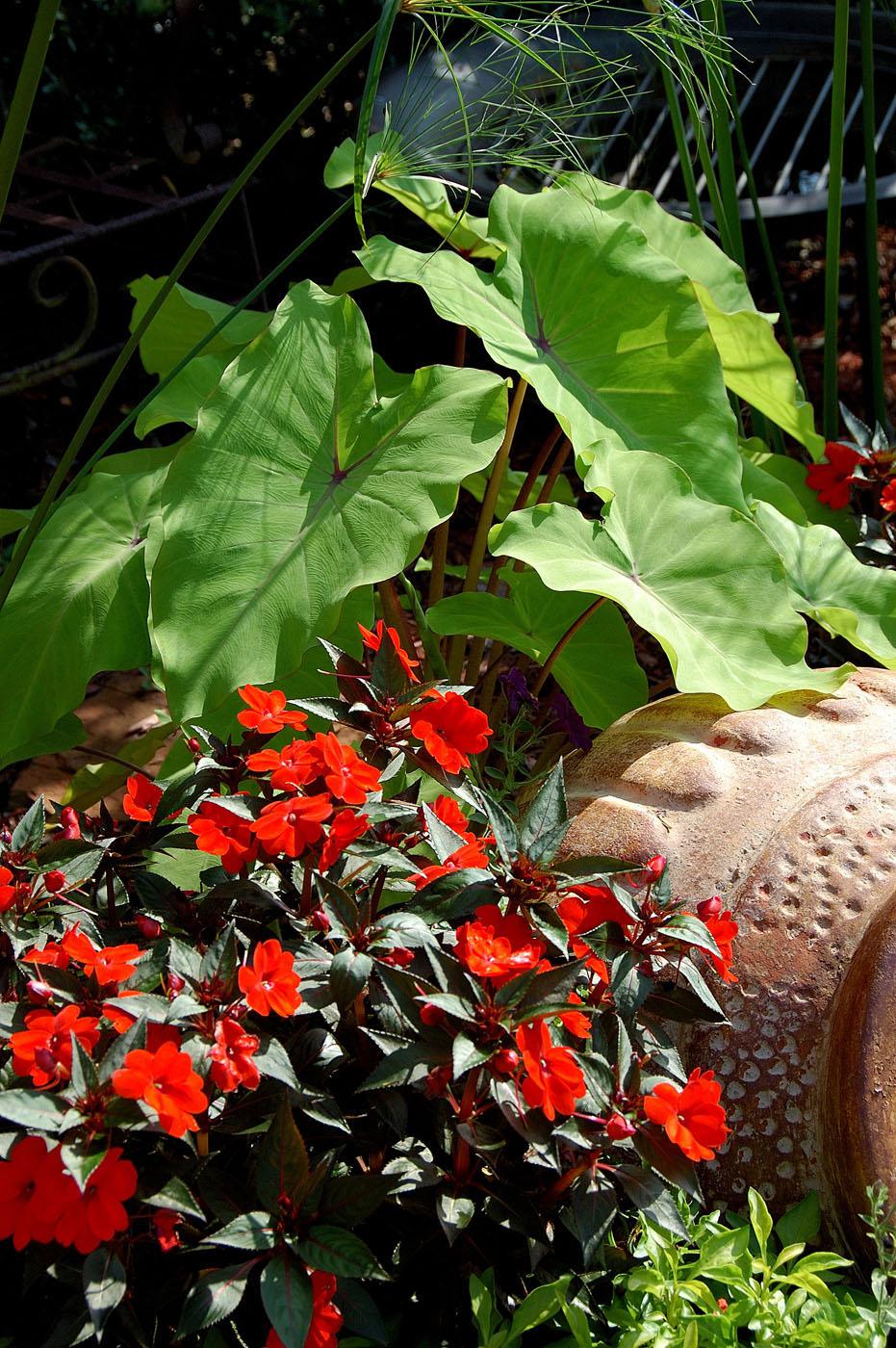Information Possibly Outdated
The information presented on this page was originally released on August 13, 2009. It may not be outdated, but please search our site for more current information. If you plan to quote or reference this information in a publication, please check with the Extension specialist or author before proceeding.
Elena is new addition to tropical landscape
By Norman Winter
MSU Horticulturist
Central Mississippi Research & Extension Center
We count on tropical plants to be the stalwart landscape performers when August heat rolls in, and one you need to consider is an elephant ear named Elena. In case you haven’t noticed, elephant ears have changed; in addition to their big, coarse or bold-textured foliage, they offer exciting color, too.
This is where Elena rises to the occasion. “Rise” might be a good descriptor, as it can form big clumps reaching 4 to 6 feet tall and exhibiting a riotous lime green or chartreuse color. Lime green is still at the top of the charts for must-have color in the shade or sun garden.
Elena is an easy-to-grow selection that tolerates full sun as long as the water supply is there. It spreads in moist sites. Elena is known botanically as colocasia, the genus with which most gardeners are familiar. It has a little purple in the veins near the center of the leaf.
The other lime green elephant ear that is rising in popularity is Lime Zinger, known botanically as xanthosomas. It can get much taller than Elena with leaves that are a little wider. Both Elena and Lime Zinger are cold hardy to zone 7b and will return as long as they don’t sit in soggy soil in the winter.
The lime green color of these plants is exceptional with other elephant ears like the deep, dark purple of Black Magic or showy cannas with red or variegated foliage. They also partner extraordinarily well with flowers.
Near the entrance to my home, I am growing Elena partnered with orange SunPatiens and King Tut papyrus, which gives an exotic, tropical but fine-textured look. In my backyard, I have Lime Zinger with an assortment of gingers that offer a good contrast in foliage color and texture.
Your success with elephant ears may very well lie in your soil preparation. The soil should be fertile and well drained, especially for winter survival. Organic matter will give you the needed fertility and improve aeration.
If your soil is tight and heavy like mine, incorporate 3 to 4 inches of compost, peat or humus, or try planting on raised beds like commercial landscapers use. While preparing your bed, work in a slow-release, pre-plant fertilizer like a 12-6-6 with minor nutrients. Use about 2 pounds per 100 square feet of bed space.
Regardless of your choice, feed your elephant ears monthly with light applications of fertilizer, and keep them well mulched. If you have an established clump, start feeding with the emergence of new growth in the spring. These are really low-maintenance plants; just remove tattered or unattractive leaves to keep them looking their best.
With leaves that defy logic in size and proportion to other plants, it’s not hard to see why elephant ears are so loved by gardeners everywhere. They offer us the opportunity to have that Hawaiian getaway without ever leaving home.








